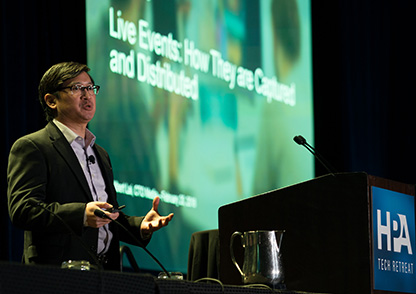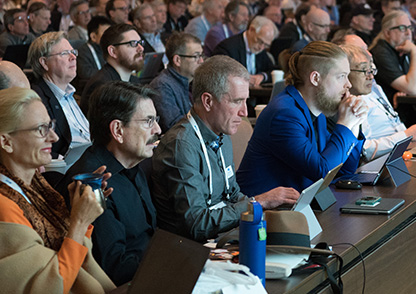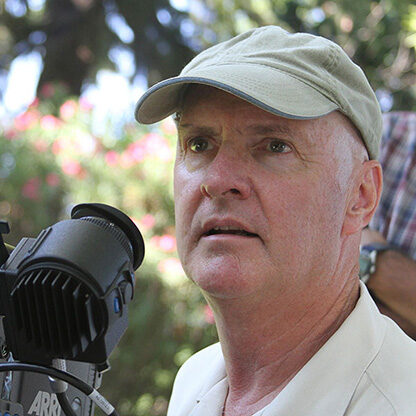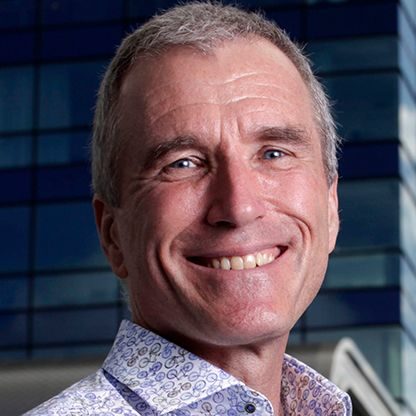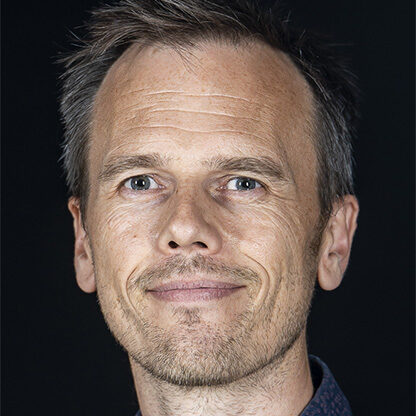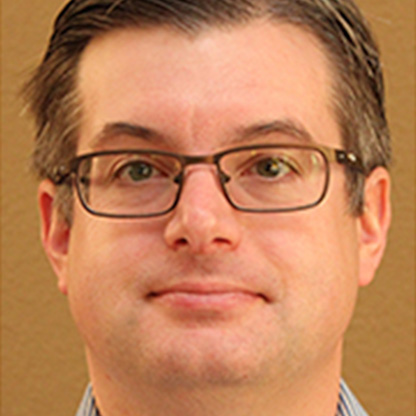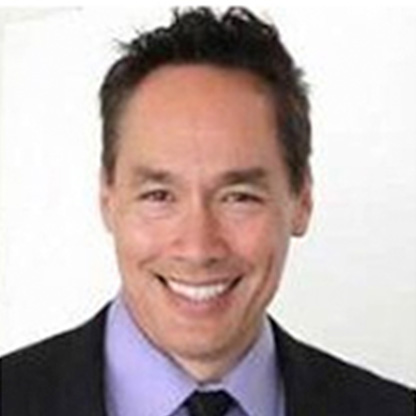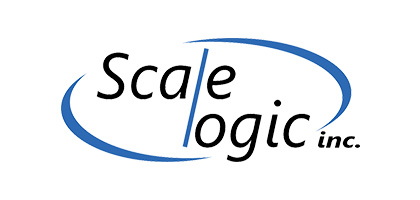Innovation Zone requirements:
Your demonstration must reflect technology that is innovative, game changing and important to entertainment markets including production, post production, broadcast, distribution, OTTs or related areas. It must provide the attendees with solution(s) that are unique and, if possible, demonstrate integrated workflows for distinctive services. Experimental products and new concepts or products are of particular interest. Start ups or creative solutions are most welcome.
You may bring secondary partners to be part of your space and demonstration if it fits within a complete solution that can differentiate the workflow or delivery process from what is available today.
Service companies and solutions providers who have unique, forward thinking offerings in production, post production, broadcast, distribution, OTT’s or a related area are invited to participate.
For the 2018 Tech Retreat, we are looking for innovations in these areas:
SMPTE 2110 and or ATSC 3.0 workflow components and integration
IMF integration – “IMF Row”
Technology that deliver high quality productions at an affordable price point
HDR, UHD for broadcast and distribution systems (including signal measurement)
VR and AR solutions for production, post and distribution
Cinema distribution technology
Distribution systems for digital outlets
Specialty aerial equipment
Video Space technology
Storage and media management with or without the cloud
Monitoring solutions from screen to projection
Gaming technology
AR for live sports
To apply, submit a description of what you would like to demonstrate for vetting purposes. Click here for the Application Form.
General Information:
The Innovation Zone is a meeting and networking area which will be open during conference hours as well as dedicated times, including a cocktail reception, two breaks per day, lunch time and prior to the Welcome Dinner. Refer to the program online (when available) for actual times.
No one is required to be with your demo during the entire time the Innovation Zone is open, except during the specific dedicated times listed in the Tech Retreat program. You are also free to make appointments during any open hours.
You may provide white papers and handouts describing the technology you will be showing as well as swag, because everyone loves free Stuff!
Related technologies will be placed in a workflow row that might define what a customer might be looking for to purchase or integrate.
We encourage Tech Retreat Innovation Zone participants to invite clients, other individuals within your company and interested industry professionals to register and visit you at the HPA Tech Retreat. However, please note that there are no guest passes to attend just the Innovation Zone. All attendees must be registered through the Tech Retreat registration site.
Innovation Zone Space Fees:
$850/space – until 31 December 2017 deadline for early application
$950/space – 1 January 2018 onward
Registration and additional services are not included in the Innovation Zone Space Fees.
Innovation Zone Space Fees are Non-Refundable.
Space Information:
The Innovation Zone is one large ballroom. You may apply for more than one space if you have more than one technology to present. An additional fee will apply and this space will be provided on an availability basis.
Each Innovation Zone space will include an 8′×10’ draped area, basic power (20 amp), wired or wireless internet (5 mbs), one table and two chairs. The table will be provided with a black linen cloth or you may use a tablecloth with your logo.
If you have something that requires a separate space, we may be able to provide this on a “limited engagement” basis. Please contact Vincent Maza or Max Ma at innovation.zone@hpaonline.com. Please note that an additional fee will apply.
You may include anything that will fit into the space except an exhibit booth, bar-type unit or anything that will block full view or limit accessibility to the spaces around you. A small cove for monitors, racks, and stands, if they don’t block a view, will most likely be permitted. If there’s a question about this, please contact Vincent Maza or Max Ma at innovation.zone@hpaonline.com.
Select additional furniture (e.g. high boy table, high stools) may be ordered through the hotel vendor, Encore.
A/V equipment may be ordered through the hotel vendor, Encore.
Internet service, whether hard line or WI-FI, in the Innovation Zone is separate from what HPA provides in the conference ballroom and a basic 5 mbs connection is included with each space. Any additional bandwidth must be ordered through the hotel vendor, Encore.
Links to all forms will be provided upon acceptance of your demo.
If your application is accepted you will be sent further information and be asked to register for the Tech Retreat and confirm your Innovation Zone space by submitting payment.
Confirmation of your space in the Innovation Zone is a commitment to have your demonstration set up from Tuesday through Thursday according to the times listed in the Program.
As mentioned above, while your Innovation Zone demo does not need to be staffed at all times, there are specific times within the program during which Innovation Zone Staff is required to be present. All persons staffing your demo MUST have a valid and individual registration for the event. Those wishing to attend the HPA Tech Retreat conference program may register for the HPA Tech Retreat Full Conference package or for a Daily Registration package (for day(s) attending). Those who will ONLY be attending the Innovation Zone can register for an “Innovation Zone Tech” package (up to 2 Tech registrations permitted per Innovation Zone space). HPA Tech Retreat registrations may be purchased now (Early Bird Pricing is available through 31 December 2017). Innovation Zone Tech registration instructions will be provided upon approval of your demo. Please note that as the Innovation Zone is a part of the HPA Tech Retreat conference experience, there is NO separate registration for the Innovation Zone. Access to the Innovation Zone is ONLY granted with an HPA Tech Retreat registration or an Innovation Zone Tech registration.
Please contact events@hpaonline.com with any registration-related questions.
The HPA Tech Retreat has a number of Press attending. Press are requested to respect your wishes to be off-the-record or enter into an NDA, but you will need to arrange this directly with them. It is not required as part of HPA issuing a Press Pass.




